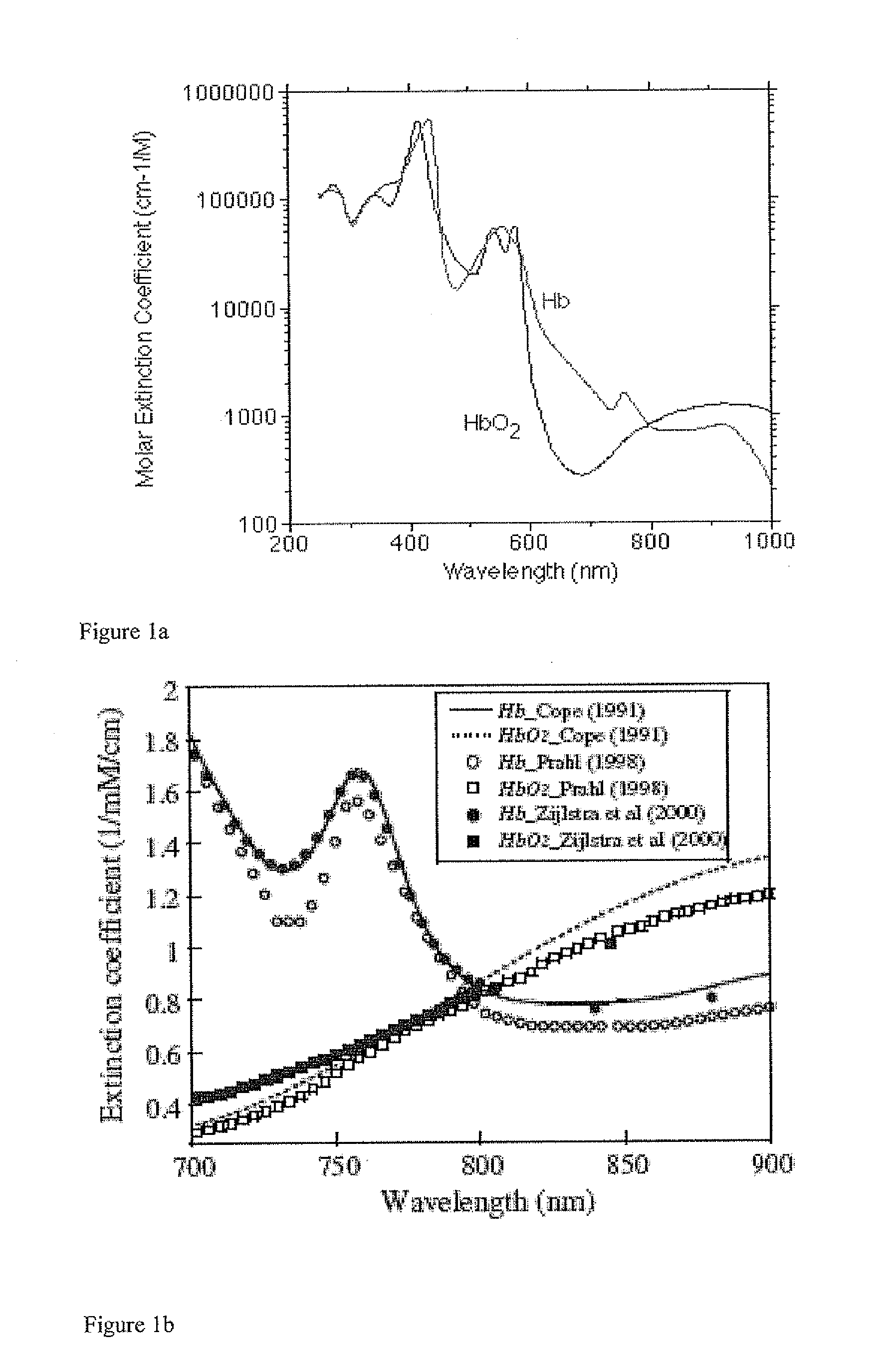Pulmonary pulse oximetry method for the measurement of oxygen saturation in the mixed venous blood
a technology of oxygen saturation and pulmonary pulse, which is applied in the direction of catheters, sensors, diagnostics using light, etc., can solve the problems of limited validity of equations, limited oxygen supply to the body, and limit the validity of equations (1,
- Summary
- Abstract
- Description
- Claims
- Application Information
AI Technical Summary
Benefits of technology
Problems solved by technology
Method used
Image
Examples
Embodiment Construction
[0033]In the current invention, a method is presented for the measurement of the pulmonary PPG signal, presenting the oscillations at the heart rate of the transmission of light through a region in the microcirculation of the pulmonary system. The pulmonary PPG signal can be utilized for the assessment of the cardiopulmonary circulatory system. It can also be used for the determination of the oxygen saturation in the pulmonary arteries, which is actually the oxygen saturation in mixed venous blood. The latter parameter enables the noninvasive (or minimally invasive) determination of cardiac output by the Fick method. The conventional PPG technique is based on measurements in the arterial system of the systemic circulation conducting blood from the left ventricle to the different organs of the body, except the lungs. The blood volume in the systemic arteries increases by the blood which is ejected from the left ventricle during systole and decreases by the relatively constant blood f...
PUM
 Login to View More
Login to View More Abstract
Description
Claims
Application Information
 Login to View More
Login to View More - R&D
- Intellectual Property
- Life Sciences
- Materials
- Tech Scout
- Unparalleled Data Quality
- Higher Quality Content
- 60% Fewer Hallucinations
Browse by: Latest US Patents, China's latest patents, Technical Efficacy Thesaurus, Application Domain, Technology Topic, Popular Technical Reports.
© 2025 PatSnap. All rights reserved.Legal|Privacy policy|Modern Slavery Act Transparency Statement|Sitemap|About US| Contact US: help@patsnap.com



